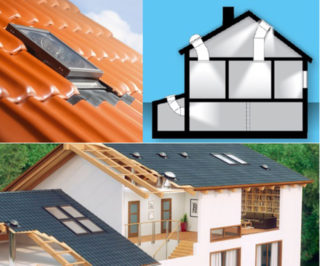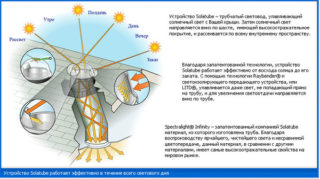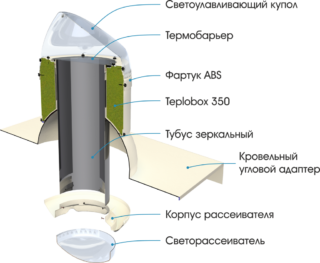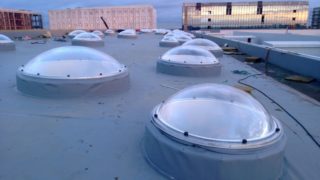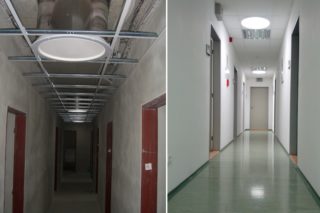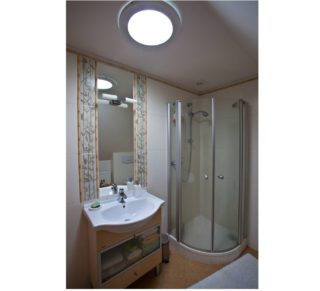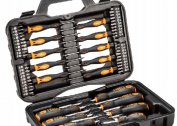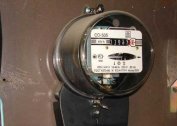The lack of light in the rooms is compensated in different ways - additional windows, devices, lamps and the like. One of the innovative solutions of recent times has become optical fibers for lighting. Small devices are mounted on a roof or walls, accumulating and delivering rays inward.
Light guide history
The first attempts to create a light guide for lighting rooms were carried out as early as 1874. Russian electrical engineer Vladimir Chikolev made a pipe with a mirror surface inside, with the help of which he illuminated the hazardous production rooms of the powder factory.
The modern method has appeared on the market relatively recently. The first devices that conduct daylight appeared in 2005. Devices have gone through several stages of improvement. The final version was presented to consumers in 2011.
A light guide is a closed type mechanism for directional daylight transmission. Another name is an optical waveguide. The devices are designed in such a way that they can have any directional curve, but at the same time deliver maximum lighting. Save on electricity and standard bulbs.
The principle of operation of the light tunnel
The devices are mounted through the roof, a spherical glass is located on top (the shape is close to the type of the dormer). The inner surface is mirrored. Thanks to the reflective elements, light passes through the pipe. Length may vary. The main thing is to go through the floor to the room.
Bottom (from the side of the room) there is a glass with a scattering effect. Outwardly, the light tunnel resembles an ordinary lamp. Some models have a built-in bulb for night time use. Installation in time and cost remains within reasonable limits. Moreover, the device allows you to save on electricity and appliances.
Side Glow Method
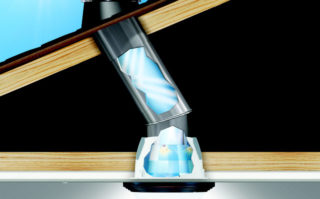
This method does not require complex technical schemes, the installation takes a little time, you can do it yourself without the involvement of professional installers. The difference is the installation of the projector outdoors, the presence of LED fibers.
No heat sources should be placed near the unit. The diffuser is installed from the side walls. This arrangement allows you to illuminate the room so that no additional sources are needed during the day. This is true for rooms without windows (dressing rooms, bathtubs, pantries, basement). Light guides for LEDs can be made by yourself.
End glow method
This method allows you to create the effect of "starry sky". Small devices are installed under the ceiling, like a spotlight. Solar fiber optic lighting is natural and smooth. An additional plus is an unusual design.
Tunnels with LED cables run through the coverings and can be either single or sprawling. The latter require accurate calculations, the cost is higher than standard.
What are the lights
The optical fibers work according to this principle: the light is accumulated in the upper spherical part, then it is supplied through reflective surfaces.Losses range from 10 to 40% on each meter of the pipe, up to 40% on bends. The classic version of the light tunnel consists of the following parts:
- dome (round glass, mounted on the roof side);
- roofing part;
- reflective tube (directly optical fiber);
- diffuser;
- additional details - corner adapters, lamps for night lighting, other.
The external parts of the lamps are made of durable materials - polycarbonate, plexiglass. Does not require cleaning - enough rain. The collection of light waves is most in cloudy weather, evening and morning.
Benefits
Devices are used more and more every year. Additional natural light is installed in industrial premises and private homes. You can install the light guide with your own hands at home. Installation takes a little time and effort.
Tunnels can save energy - according to average fiber guides can spend up to 60% less. With proper installation, the light guide serves for 10 years or more - a manufacturer's warranty of at least 5 years. The devices are thermally insulated - in the summer it does not let heat through, in winter it is cold (it is important for residential premises, floriculture and others).
Light tunnels are easy to maintain. It is possible to regulate lighting. Of the additional functions - airing, a classic lamp (depending on model).
disadvantages
With all the obvious advantages, such mechanisms have several disadvantages, which should be familiarized with before installation. A light guide is a device that accumulates natural light. Therefore, for normal operation, a sufficient amount of time is required - the tunnels are not suitable for use in places with short daylight hours.
In winter, difficulties can also arise. If the dome is covered with snow, performance and light transmission will decrease, sometimes to zero. Therefore, you must either install another source, or clean the glass in a timely manner.
The initial installation is expensive. Although this drawback is temporary - the usual payback period is 2-3 years, and the operating time is more than 10 years.
Application of optical fibers for lighting a private house
Country houses are often equipped with independent power sources, lighting. Light tunnels are suitable for use in different rooms and rooms, save money, so every year they become more popular.
Kitchen lighting
The kitchen is a place where food is cooked and family gathers. Some spend most of their time here. Usually a ceiling lamp or a chandelier becomes the central source of light. Such a source cannot be called ideal - there is no uniformity of lighting, flickering artificial light is harmful to the eyes.
Light guides create diffused natural light that does not irritate the eye and is more familiar to the eye. You can install one tunnel or several small ones on the ceiling.
Bathroom lighting
The main difference between fixtures in the bathroom is safety requirements. High humidity creates conditions in which not any source can be used. The fibers do not use electricity, there are no heating or other elements. Therefore, tunnels are considered the most suitable lighting devices.
The best option is to hold several light lamps. Bright lighting is required at the mirror, where many procedures are carried out: applying makeup, shaving, and others.
Room lighting
If there is no window in the room, it is almost impossible to select the lamps correctly. No lamp can replace natural daylight. The solution will be light tunnels.Several lamps will sufficiently illuminate the room, while not overloading the eyes.
Living room lighting
This room is considered the most versatile in the house. Good lighting is essential. Common sources are no less important than local ones. If there is no way to cut through large windows, you can use optical fibers. The correct wave range of the usual eye lighting will help create a cozy atmosphere and save.
Cost-effective implementation of optical fibers
The main advantage of light tunnels is saving financial resources due to instant reduction of costs and payback. This is noticeable in industrial premises. For example, in buildings with an area of over 100 sq.m. the average consumption per 1 sq.m is 1,500 rubles. After installing the optical fibers - the amount is reduced to 600-700 rubles. Warehouses, production pay for the installation of the system for 2-3 years (average).
The choice of light sources depends on the type of room, the capabilities and preferences of the owners. Light guides are an alternative way of lighting that fits any room.
